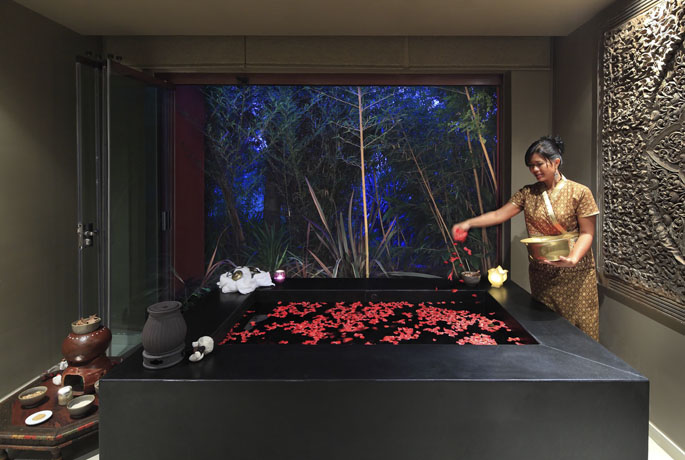THE TRADITIONAL KIMONO
Today, in our Asia Gardens blog, we cannot wait to tell you about one of the most spectacular items in Japanese traditional culture: The Kimono.
As lovers of Asian luxury and culture, in our luxury hotel in Alicante, we could not but include an item as precious as this. When you walk through our lobby we recommend you stop for a few minutes to admire it, it is unique…
Due to the importance of this traditional art, the London art and design museum “Victoria and Albert Museum’’, pays tribute to this luxurious craft in an impressive exhibition…
The kimono carefully wraps around the body in an almost architectural way. It is held at the back by a thick belt called obi. There are many different types and they are tied up in different ways depending on how formal the event is; for instance, if we were to attend a traditional Japanese wedding we would have to wear a Maru Obi, which has designs on both sides and it is the most formal of them all.
The accessories that go with the kimono are the geta (wooden mules) or zori (flat sandals made of cotton and leather) and the tabi, traditional socks, with a separation between the big toe and other toes in order to fit in the sandals. There are also hair accessories, the Kanzashi, hair-clip ornaments, made of different materials like pearl, ebony, ivory… giving the final touch to the outfit.
There were a series of codes when it came to colours, some of them were banned for everyone except the Emperor or his family members. Each rank could wear a series of specific colours, the highest rank wore purple, the lighter the shade the lower the rank.
Currently, most Japanese people use western-style clothes, the kimono is considered a luxurious garment and it is only used in special celebrations, weddings and traditional festivals. The kimono is one the main symbols of Japanese culture, and it represents the soul and spirit of the life in Japan and that is why it is kept for the most exclusive events.
There is a wide range of kimonos, worn according to the event they are for and the corresponding status, for instance a dressy kimono, Furisode, for an important celebration, its main feature is sleeves that go all the way down to the ankles, made of silk and worn by single women of age. There are also special kimonos for festivals and traditional Japanese parties, like the Yukata made of cotton. A few days ago, in our blog we told you about the tea ceremony, for this event the kimono Iromuji is the one that must be worn. This is a single-coloured kimono that may include same-shade ornaments, and may be worn by married and unmarried women of all ages.
Japanese weddings are also a special event in which kimonos take the leading role. The most traditional kimono is worn by the bride, the Shiromuku, this is a white bridal kimono, shiro means white and moku means pure, it is worn with a half-moon shaped headpiece which indicates the dedication and infinite loyalty of the wife. Over the robe, the Uchikake is placed as a cape without an obi, a long-sleeve kimono with bright-coloured crane, pine tres, water and flowers embroidery patterns. The groom on the other hand, always wears black and his suit is much simpler.
Would you like to have a Japanese-style wedding? Our 5-star resort in Alicante is the perfect place for a memorable celebration.
Asia Gardens awaits you…
SAYONARA



